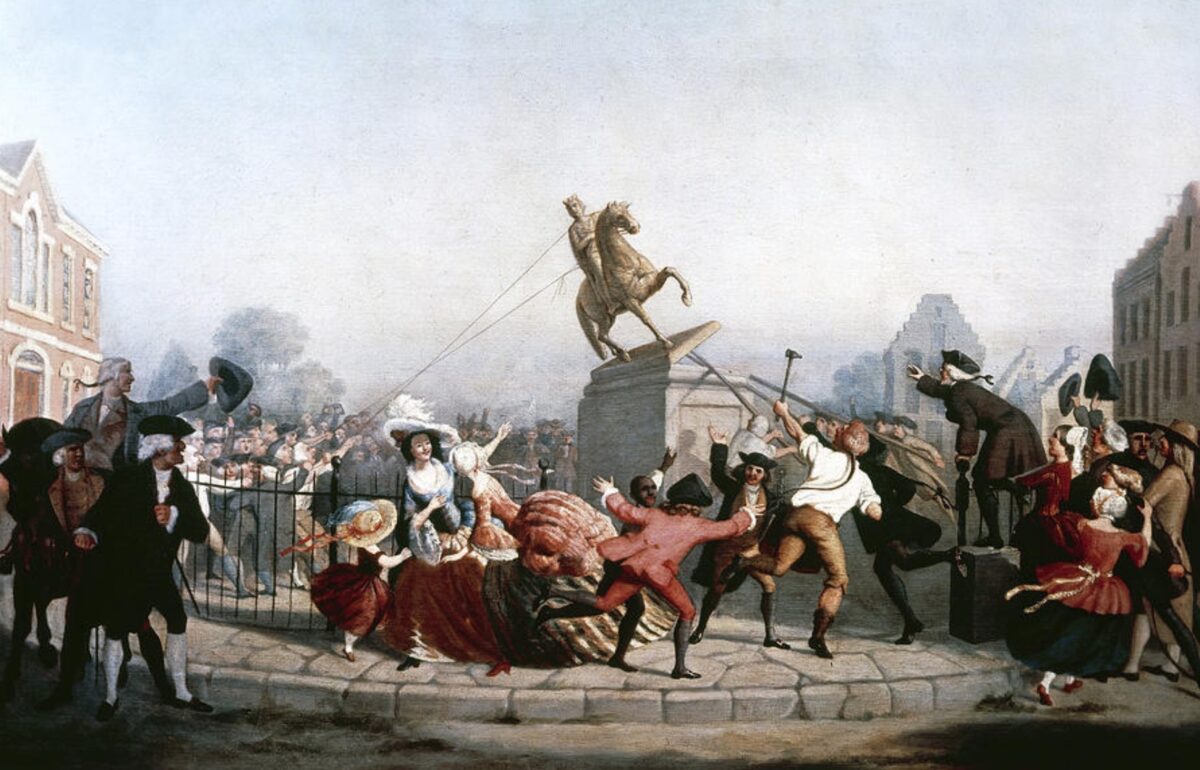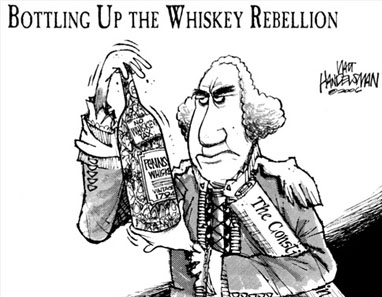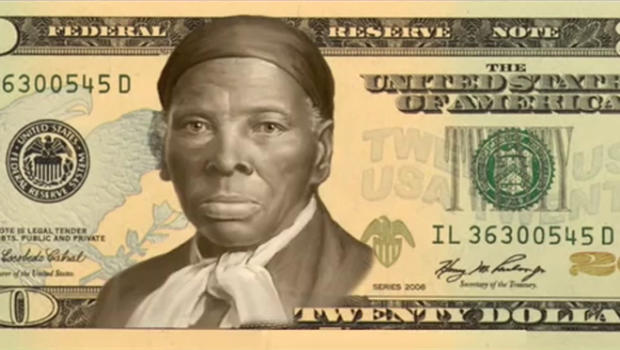Blog #131 – Which statues need to be torn down?
Following the murder of George Floyd on May 25, there was a spasm of protests that touched every single state in the country. Historians had not seen this many spontaneous protests since Dr. King’s assassination in April 1968, but this time, they were different than those in 1968. Many of the protestors started using the slogans of Black Lives Matter, a group started in 2013 by 3 women who were angry that a Florida jury did not convict a white man who had killed Black teen Trayvon Martin. Many of the protestors coopted the language of critical race theory that believes there are systemic racist structures that perpetuate white supremacy and white privilege. Some of the protests turned violent. Most did not. And many white Americans started to notice and challenge racist notions that they had previously ignored before.
Aunt Jemima got retired off the syrup label because she was based upon a racist stereotype.
The NFL team in Washington D.C. bowed to pressure to change their racist mascot despite the owner proclaiming he would NEVER change it.
The Mississippi legislature voted in late June to change their state flag because it has included the Confederate battle flag since 1894- see image below. There had been two efforts to change it in 2001 and 2015 but neither worked.

Other countries’ sports teams wore Black Lives Matter t-shirts in games and practices. And there were also huge protests across the world protesting America’s treatment of its citizens of color.
When Major League Baseball began play in late July, whole teams took a knee during the playing of the National Anthem. Previously, sparked by Colin Kaepernick and other sports stars, critics had charged these players who knelt during the anthem as hating America or that he just wanted attention.
NBA players were allowed to modify their names on their jerseys when the league started up. Many of the slogans included things like “I Can’t Breathe,” “Black Lives Matter,” and “Say Her Name.”
There was a strong push in both Congress and the media to rename the ten military bases named after Confederate military leaders.
And statues were torn down. The list found here is extensive, but the statues included other Americans (plus an Italian named Christopher Columbus and several statues of Spanish priests who were instrumental in the deaths of indigenous people) who had nothing to do with the Civil War including George Washington, Thomas Jefferson, Ulysses S. Grant (he was on the winning side!), John C. Calhoun (the founder of the idea that slavery was a “positive good”) among others. There was also an attempt to take down the massive statue of President Andrew Jackson in D.C. before the President ordered it protected. Other monuments were removed by the cities where they resided before they could be torn down. And some statues were targeted for removal because of troubling imagery including one with Abraham Lincoln.

These things happened so quickly and with such anger that it’s still shocking to think how quickly things changed just within the span of a month or two. Even a monument to the some of the most famous Black soldiers in American history, the 54th Massachusetts in Boston, was defaced during protests in June (I was a bit confused about this one).
If you ever wondered why there are so many monuments (and military bases) honoring the Confederacy – normally monuments don’t get erected to honor the losers in a war but we have thousands of these monuments around the country – we have the United Daughters of the Confederacy to blame for that. Take a look at this brief video on the UDC and their vast influence – not just through monuments but also through the writing of Southern history textbooks that shared something we will go much more in depth on called the Lost Cause – https://www.facebook.com/watch/?v=1562229127298017
I get that there was a lot of pent-up anger at systemic racism that exploded in late May and in June. I get why Washington, Jefferson, and Calhoun were all taken down (they were slaveowners, and so was Grant, albiet very briefly). There has been a reckoning that America has been going through since May 25, and there has been tremendous pressure to fix things and do right by America’s POC. What should be fixed and changed will likely not happen until next year (at the earliest), but I wanted to focus on the statues first.
Statues are usually put up to honor heroes of our history. Given the UDC’s blatant attempt at rewriting the history of the Civil War, a number of statues were erected during the turn of the 20th Century, it’s no surprise that the traitors of the Confederacy were honored with statues. But what has happened most dramatically seen since late May has been a shift in the way many white Americans have seen these statues. The undercurrents of racism had been ignored by many white Americans. Black Americans had previously been told to just accept these statues, they’re no big deal. But they didn’t accept them or stop without a fight. There was a push to remove some Confederate statues after the mass shooting of nine Black parishoners in Charleston, S.C. in 2015 by a white teen who had been radicalized by white hate groups. Some statues were removed. Others stayed up. And there are likely some statues that might still get taken down.
So here are a few questions I’d like you to answer:
- Do you think that this emphasis on taking down statues is overblown, is just about right, or maybe even a desecration of American history? Do we need to take down more statues? Why?
- Statues capture a moment in time and place – the people at that time felt the need to honor someone who they felt needed to be remembered. But times change and so do people. Things that were acceptable 50 – 100 years ago may no longer be acceptable. Should those statues and monuments be removed because times have changed? Why or why not? Or can we leave the statues up and change the way that those figures are taught and should be remembered?
- Should we even have any statues at all of our heroes? Why or why not?
Your answers for all three questions should be a minimum of 400 words total (not 400 words for each question).
Due by the first day of class before class meets.
As you can see from the painting below, we have a history of tearing down statues in this country.




 by you.” A different example from the article is what the University of Virginia has done in the past decade in trying to honor its slave past. At least 140 slaves helped build the university, and this fall, Virginia opened up a dorm named after two of the slaves who had worked on the campus before the Civil War.
by you.” A different example from the article is what the University of Virginia has done in the past decade in trying to honor its slave past. At least 140 slaves helped build the university, and this fall, Virginia opened up a dorm named after two of the slaves who had worked on the campus before the Civil War.

